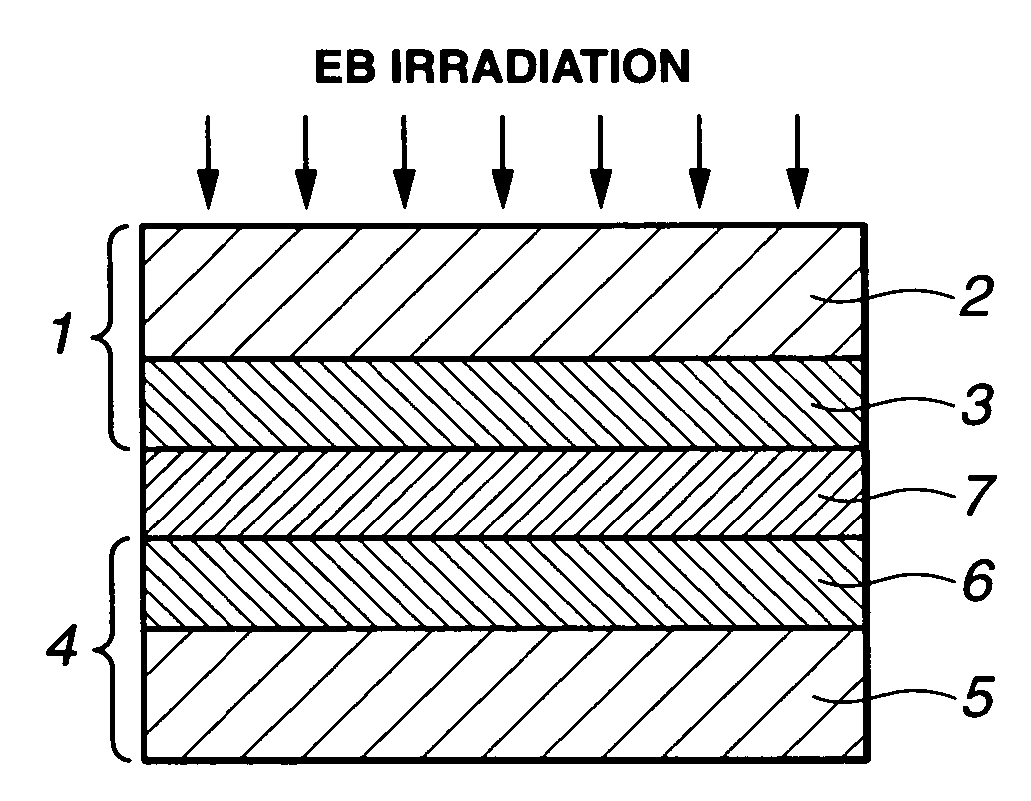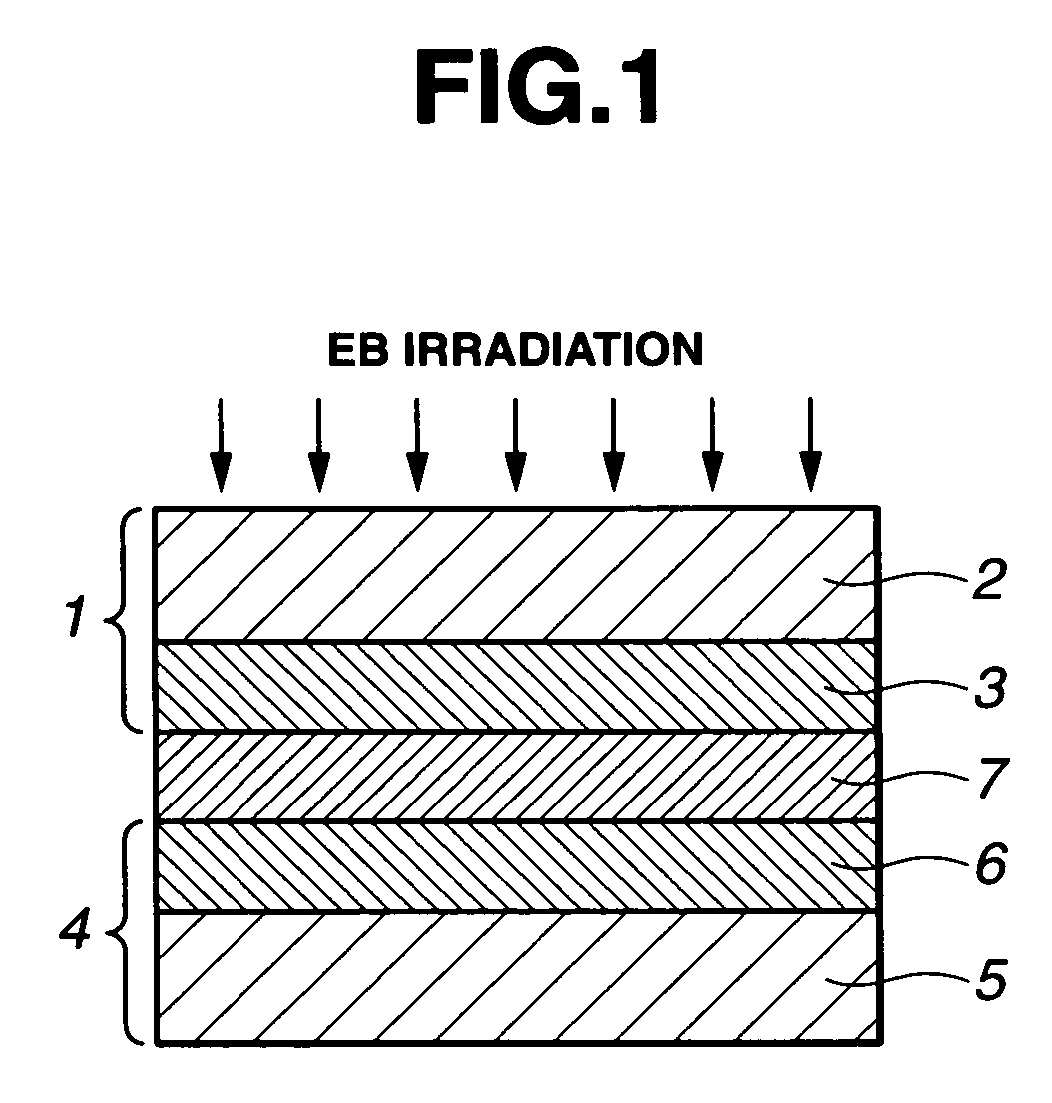Methods for preparing electrolyte membrane and electrolyte membrane/electrode assembly for fuel cells
a fuel cell and electrolyte technology, applied in the direction of electrochemical generators, sustainable manufacturing/processing, final product manufacturing, etc., can solve the problems of increased cost of fluororesin base electrolyte membranes as typified by nafion, lack of practical usefulness of electrolyte membranes, and substantial bar against practical applications, etc., to achieve the effect of reducing thickness
- Summary
- Abstract
- Description
- Claims
- Application Information
AI Technical Summary
Benefits of technology
Problems solved by technology
Method used
Image
Examples
example 1
[0067]A reactor was charged with 60 g of a nonylphenol EO (4 mole)-modified acrylate, Aronix M-113 (Toagosei Co., Ltd., trade name), 88.6 g of polyethylene glycol having a number average molecular weight of 1,000, and 0.1 g of 2,6-di-tert-butylhydroxytoluene. In a nitrogen stream at 65-70° C., 30.8 g of 2,4-tolylene diisocyanate was added dropwise to the reactor. After the completion of dropwise addition, the reactor was kept at 70° C. for 2 hours, followed by addition of 0.02 g of dibutyltin dilaurate. In dry air, 20.6 g of 2-hydroxyethyl acrylate was added dropwise. The reactor was kept at 70° C. for a further 5 hours, obtaining a polyether urethane acrylate oligomer containing 30% by weight of M-113 (Oligomer A).
[0068]50 parts by weight of Oligomer A was mixed with 50 parts by weight of phospho-tungstate n-hydrate (by Wako Junyaku Industry Co., Ltd.) to form a liquid electrolyte membrane composition having a viscosity of 12,000 mPa·s at 25° C.
PUM
| Property | Measurement | Unit |
|---|---|---|
| operating temperature | aaaaa | aaaaa |
| viscosity | aaaaa | aaaaa |
| viscosity | aaaaa | aaaaa |
Abstract
Description
Claims
Application Information
 Login to View More
Login to View More - R&D
- Intellectual Property
- Life Sciences
- Materials
- Tech Scout
- Unparalleled Data Quality
- Higher Quality Content
- 60% Fewer Hallucinations
Browse by: Latest US Patents, China's latest patents, Technical Efficacy Thesaurus, Application Domain, Technology Topic, Popular Technical Reports.
© 2025 PatSnap. All rights reserved.Legal|Privacy policy|Modern Slavery Act Transparency Statement|Sitemap|About US| Contact US: help@patsnap.com


